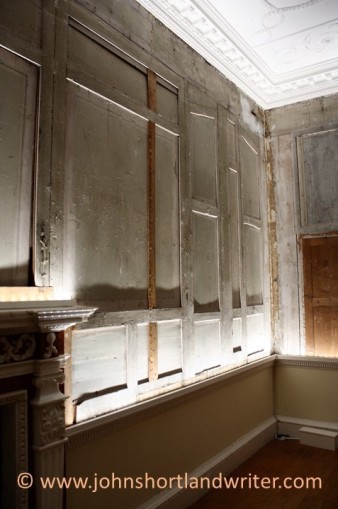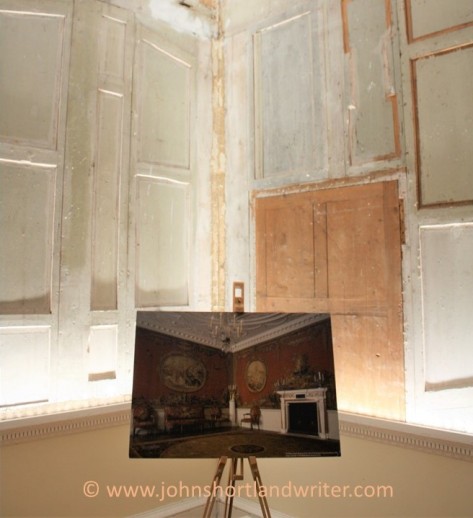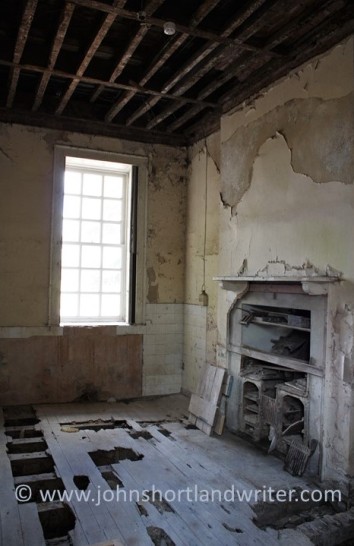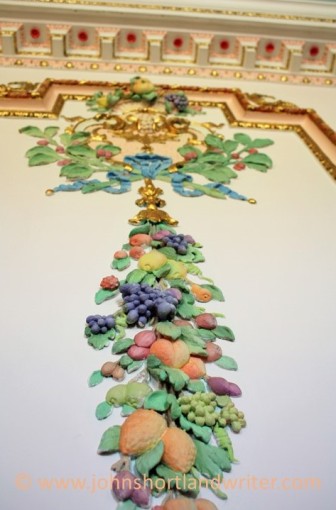Glorious Vandalism?
Croome Court, ancestral home of the Earls of Coventry, has seen many changes in its more recent history. Perhaps none were quite so colourful as the five years that it was the UK headquarters for the Hare Krishna movement.
The earliest parts of the building date back to 1640 but in 1741 the sixth Earl commissioned Lancelot ‘Capability’ Brown to transform the house and grounds. Better remembered for his lakes and parkland landscaping, the house, rotunda and church are important, early examples of Brown’s architectural work.

The Rotunda designed by Lancelot ‘Capability’ Brown
Inside, there is decorative plasterwork by Vassalli, designed by Adams, and by Joseph Rose Jr, designed by Brown, all self-coloured white. However, in the latter’s dining room the Hare Krishna have left their vibrant mark.

Lord’s Dressing Room
It is, I believe, National Trust policy to leave Croome to reveal all its various uses and ownership changes by leaving much as they found it in 2007. This is almost a necessity for most of the house’s contents were sold over the course of the last century. The most well-known example of this was the sale of the entire contents of the Tapestry room where fine, French wall hangings were sold in 1902. These were later donated to the Metropolitan Museum of Art in New York where they are now on display leaving the original room bare and forlorn.

Lady Coventry’s Boudoir

The naked walls of the Tapestry Room

Painting of the Tapestry Room c.1900
Croome is a fascinating place to visit. It’s rooms devoid of furnishings allows the mind, unfettered by their distraction, to concentrate instead on their size, scale and the glories of their plasterwork and outlook. In places, the fabric of the building is stripped bare to reveal tantalising glimpses of voids, old beams and unsafe rooms. These, in themselves, are a reminder of the shocking loss to the nation’s history when any historic building falls into disrepair or is demolished.

It will be interesting to see if the Krishna coloured plasterwork remains for posterity. Should it be preserved as it is now? Is this a refreshing interpretation of traditional, high quality plasterwork or sheer vandalism, an abhorrence that ought to be erased? Whatever your opinion, nothing quite prepares you for the visual ‘shock’ you experience when you first enter the room.

Dining Room plasterwork detail

Dining Room plasterwork detail
To visit Croome Court or to find out more click here


Comments
Post a Comment